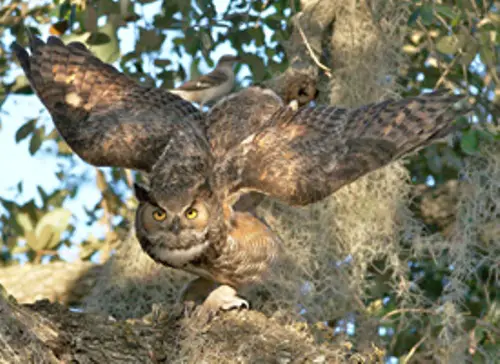10 Interesting Great Horned Owl Facts
Great horned owl facts present the information about the largest of species of owl in the world. The animal can be seen living in South and North America. The owl likes to reach a wide array of animals such as amphibian, reptile, bird and mammal. Look at the facts about Great Horned Owl below to get a deep understanding.
Great Horned Owl Facts 1: Own Species
The animal can be seen in various ranges in the world. You can see them living in South or even North America. It comes in the Mexico, Alaska, Canada, and Patagonia.
Great Horned Owl Facts 2: Nick Name
Great horned owls are recognized with various names such as cat owls, hoot owls, and winged tigers. Johann Friedrich Gmelin gives a name Bubo virginianus to reflect the Virginia colonies where this animal was observed at that time.
Great Horned Owl Facts 3: Habitat
The habitat of great horned owls is various. They can be seeing living in woodland and boreal forest. Some people also scrutinize them on the suburban and agricultural areas.
Great Horned Owl Facts 4: Mating Seasons
The main process of female and male great horned owls is by bowing each other. They also rub bills. Both will nest from January to February.
Great Horned Owl Facts 5: Size of Owls
Even though the great horned owl is not considered as the largest owl, this animal is big. The weight is around 3.25 pounds, while the length is about 23 inches. The biggest one is taken by the great gray owl which can grow up to the height more than 3 pounds and length of 33 inches.
Great Horned Owl Facts 6: Cryptically Colored Owl
This animal has a unique feature. It can be cryptically colored when it is inactive during the day. It can be a good cover. The owl can blend with look of nature and prevent any predator while the owl is sleeping.
Great Horned Owl Facts 7: Ear Tufts
Great horned owl has ear tufts. Some experts have different opinion about the function of ear tufts. Some of them think that they serve as a communication too, while others believe that they are used as a camouflage.
Great Horned Owl Facts 8: Nocturnal Birds
The great horned owl is considered as a nocturnal bird. It is active when the dusk comes. The owl spends the night to hunt food. It becomes inactive when in the morning and noon. Look at bunny facts if you want to check a cute animal.
Great Horned Owl Facts 9: Diet
Great Horned owls eat the small mammal, American crows, peregrine falcon, osprey and many more. If you want to know about another bird, read macaw facts.
Great Horned Owl Facts10: A Long Live Bird
A great horned owl is included a long lived bird. This animal can live in the wild with the life span at 13 years. If it lives in the captivity, it can reach the age around 38 years.
There are some natural predators hunting for great horned owls. One of them is northern goshawk. Both animals want to pursue the nesting site. Do you have any opinion on facts about great horned owl?






